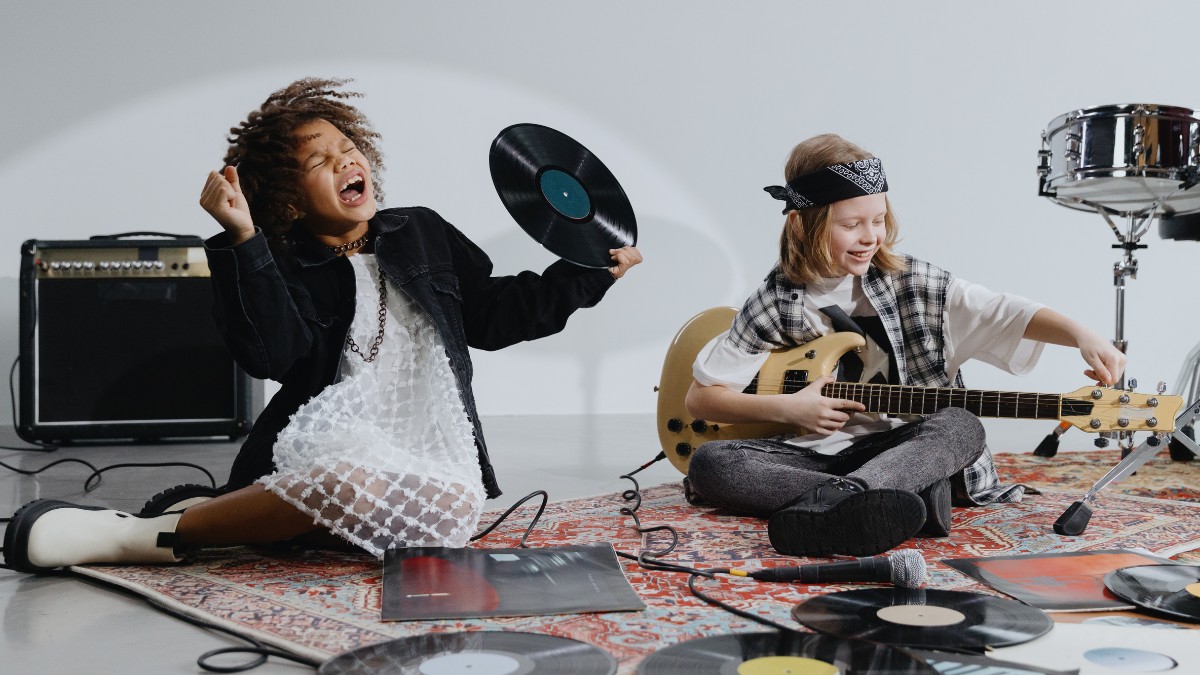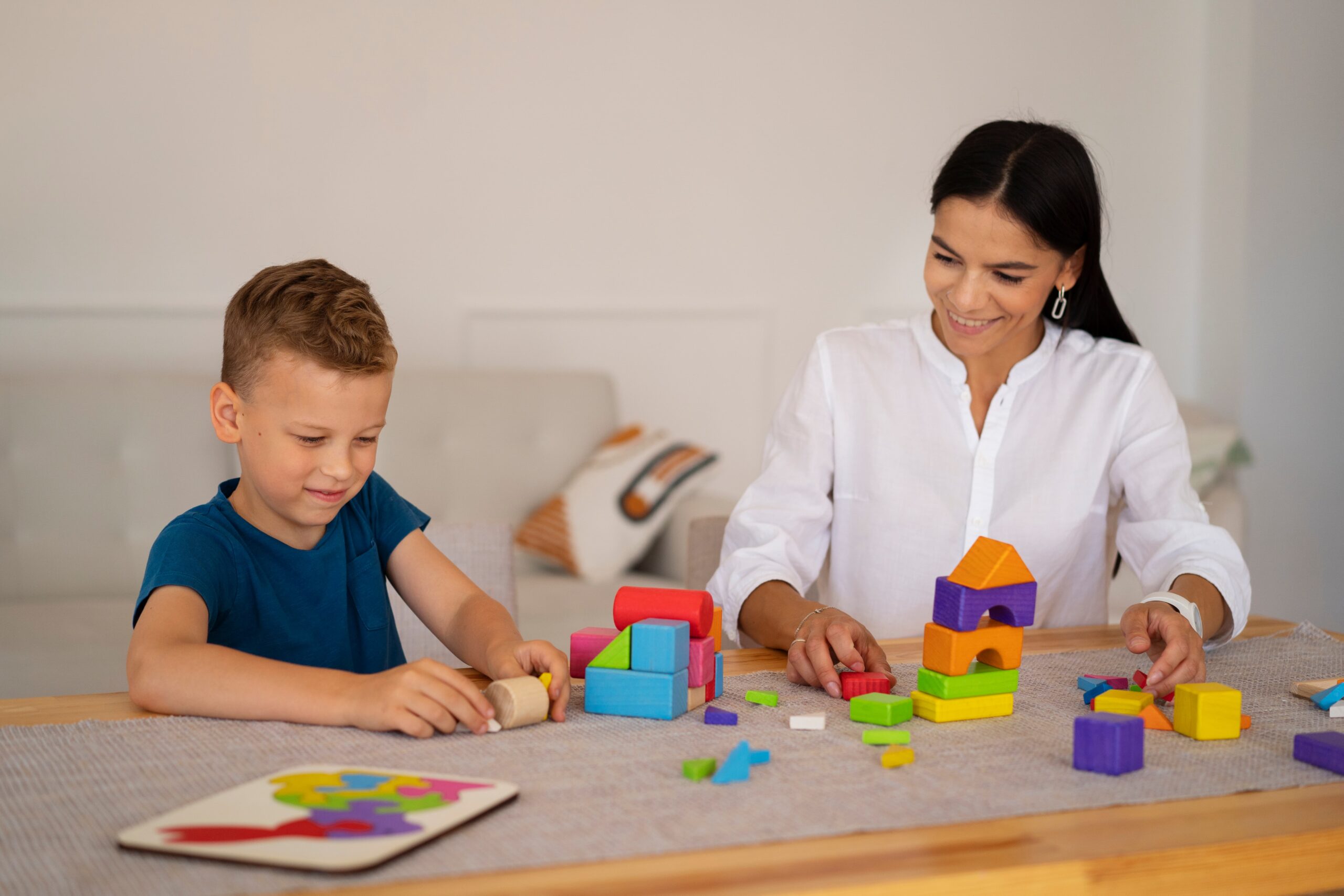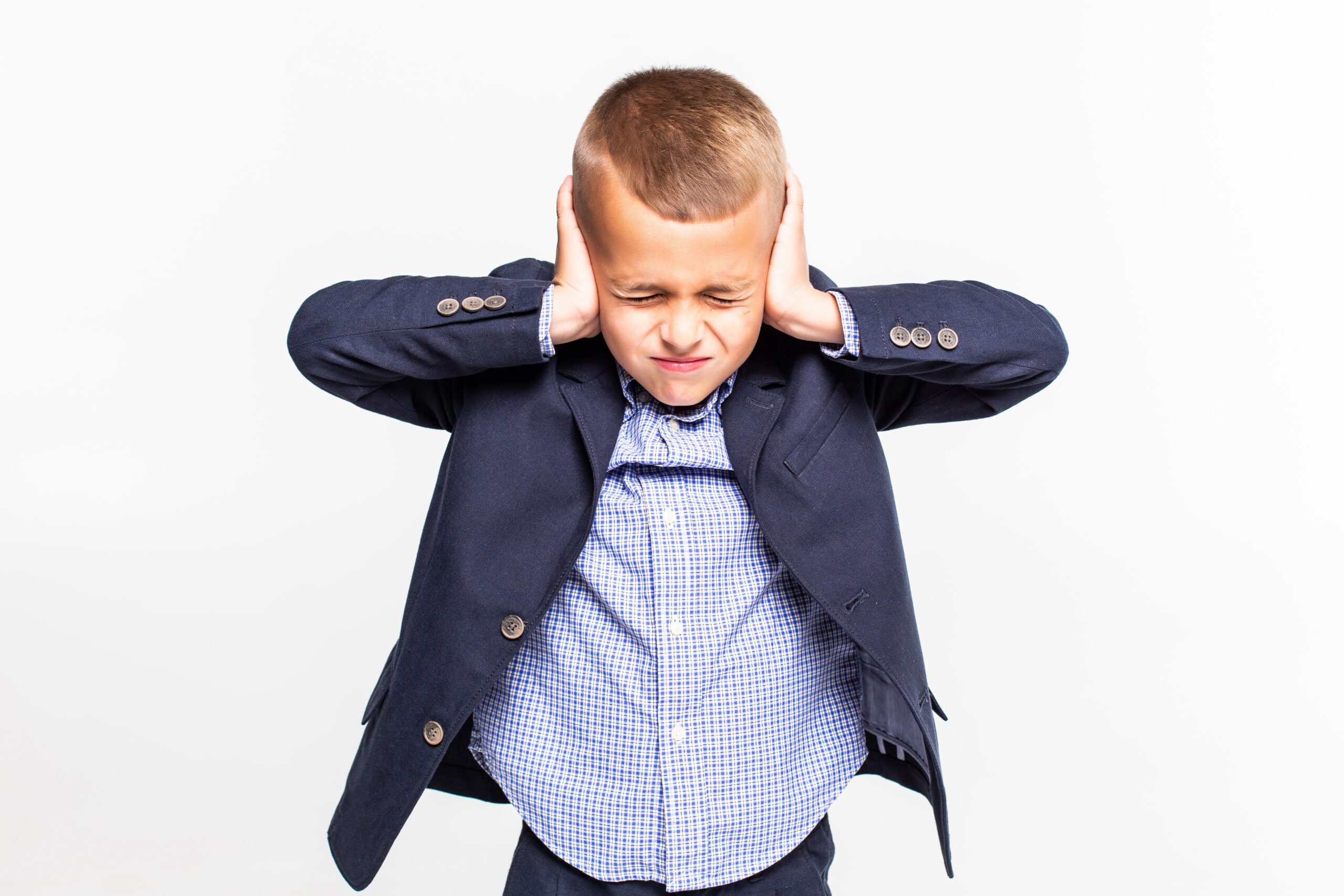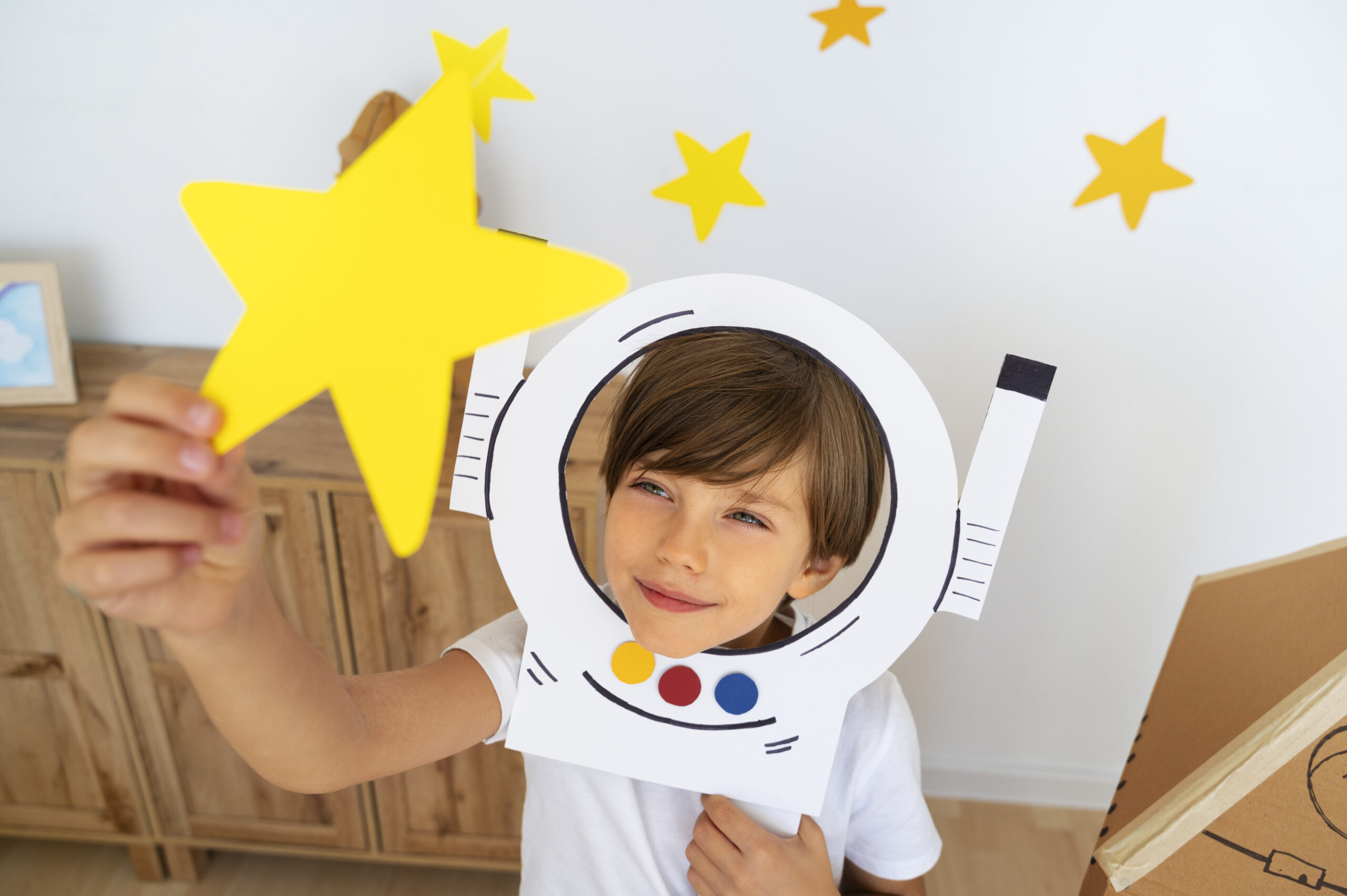Key Points:
- Music therapy for autism can improve communication, behavior, and emotional expression in children on the spectrum.
- Various techniques such as rhythm games, vocalizations, and instrument play are tailored to individual needs.
- Combining music-based approaches with ABA therapy leads to more consistent progress and improved outcomes.
Children with autism often experience the world in a uniquely sensory way. They may struggle with communication, emotional regulation, or social connection—but music can offer an intuitive and joyful bridge.
Music therapy for autism has gained recognition for its ability to address these core challenges through structured yet flexible interventions. This article explores how it works, what techniques are used, and how parents can integrate music therapy into their child’s development plan.
What is Music Therapy for Autism?
Music therapy for autism is a structured, evidence-based intervention that uses musical experiences to address communication, sensory, emotional, and behavioral goals. It is facilitated by a certified music therapist and tailored to each child’s unique needs and strengths.
These sessions aren’t just about playing songs. Music therapists use rhythm, melody, movement, and interaction to create a safe space for learning and connection. Whether through drumming exercises, singing, or improvisational music play, each activity has a specific developmental objective behind it.
How Does Music Therapy Help Children with Autism?
Music therapy targets several developmental domains at once. For many autistic children, music engages both hemispheres of the brain, encouraging more synchronized neural processing. This helps with coordination, attention, and emotional expression—all areas where children on the spectrum often face difficulty.
By building predictable patterns through music, children can develop a stronger sense of routine while also learning to tolerate changes more gradually. Additionally, musical interaction provides a less threatening way to practice social turn-taking, listening, and reciprocal communication.
What Techniques are Used in Music Therapy for Autism?
Music therapy is not a one-size-fits-all method. Therapists draw from a range of approaches, depending on the child’s age, abilities, preferences, and therapeutic goals. Once a therapist establishes rapport with a child, they typically use a blend of structured and improvisational techniques. This balance helps the child feel both supported and free to explore.
Common music therapy techniques:
1. Rhythmic Entrainment
This technique uses steady beats or rhythms to help regulate a child’s body movements or attention. It supports motor planning, coordination, and sensory integration during structured sessions.
2. Call-and-Response Singing
A back-and-forth musical exchange teaches turn-taking, imitation, and joint attention. It fosters social interaction and encourages verbal engagement, even for children with limited speech.
3. Instrument Play
Children explore sounds and develop motor skills using drums, bells, shakers, or keyboards. This hands-on activity is both fun and beneficial for sensory regulation and coordination.
4. Lyric Analysis or Songwriting
This approach helps children explore emotions, build narratives, and express their inner thoughts through creating or discussing song lyrics in a supportive environment.
5. Vocal Improvisation
Therapists guide children in experimenting with vocal sounds, tones, or pitches. This is especially helpful for nonverbal children learning to express themselves through sound.
6. Movement to Music
Guided movement games or dance activities paired with music promote body awareness, emotional regulation, and self-expression in a playful and supportive setting.
7. Sensory Music Games
Combining musical play with tactile objects, textures, and sound variations, these games gently increase a child’s sensory tolerance while maintaining a sense of fun and control.
Each session is adjusted in real-time based on the child’s responses and progress.

Who Provides Music Therapy for Children with Autism?
Music therapy should be conducted by board-certified music therapists (MT-BCs) who have completed approved academic training, clinical hours, and passed a certification exam. These professionals understand how to modify musical experiences for developmental and therapeutic outcomes.
Parents should avoid informal or purely recreational music classes unless guided by a therapeutic objective. While music is naturally enjoyable, therapeutic outcomes require consistent strategies and documentation of progress. A qualified therapist will also collaborate with the child’s care team, including speech therapists, occupational therapists, and ABA providers, to create an integrated plan.
How Can Music Therapy Support Communication Development?
Many autistic children are delayed in speech or struggle with nonverbal communication. Music therapy offers multiple entry points to support communication, from basic vocalizations to structured language-building exercises.
Melody and rhythm provide an extra layer of predictability, which can make it easier for children to anticipate and produce verbal patterns. For nonverbal children, sound play through humming, pitch matching, or vocal mimicry can serve as a first step toward speech. Over time, children learn to use these skills outside of music sessions—such as in classroom routines or during play. Since sound sensitivity can impact how a child engages in these environments, tools that help manage auditory input are just as important—explore more in our article Noise-Cancelling Headphones for Autism: Benefits and Tips.
Can Music Therapy Improve Social Skills?
Yes, music therapy is especially effective for developing social awareness and interaction. Because music naturally involves listening, responding, and cooperating, it offers an engaging way to practice these essential skills.
Group music therapy sessions are especially useful for social learning. Even one-on-one sessions often use back-and-forth musical games that require children to observe, respond, and share control—just like in typical social exchanges. These lessons carry over into peer interactions and family dynamics, helping children feel more confident socially.
How Can Parents Support Music Therapy at Home?
Reinforcing music therapy at home helps children generalize what they learn in sessions. While the therapist should guide this process, parents can still incorporate music in strategic, consistent ways that match their child’s goals.
It’s important to keep music activities structured. Rather than simply playing music in the background, choose interactive routines or songs that invite participation.
At-home music therapy ideas include:
Use Hello and Goodbye Songs
Reinforce therapy routines by singing familiar greeting songs to signal transitions and build consistency.
Play Freeze Dance Games
Encourage self-regulation and body control with playful start-stop movement to music activities.
Try Rhythm Clapping Games
Support social interaction and turn-taking through simple clapping patterns or call-and-response rhythms.
Sing Routine-Based Songs
Use music to guide daily tasks like brushing teeth, cleaning up, or getting dressed.
Let Your Child Lead
Empower your child by allowing them to choose instruments or direct simple musical games.
Even a few minutes per day can enhance carryover and boost engagement.
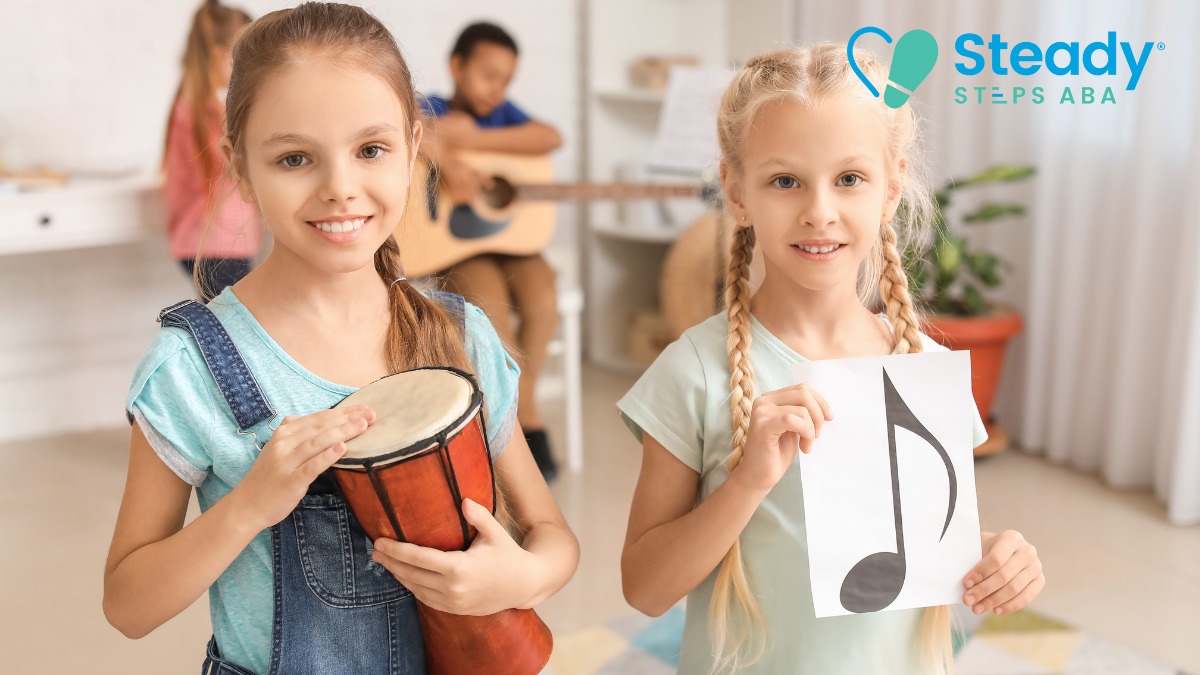
Is Music Therapy Best Used Alone or with Other Interventions?
Music therapy works best when combined with other evidence-based practices. In particular, when integrated with Applied Behavior Analysis (ABA), music therapy can enhance learning and behavior change in a more engaging format.
ABA focuses on measurable goals and behavior strategies, while music therapy can reinforce those goals through emotional expression and motor learning. Together, they provide a comprehensive toolkit for supporting your child’s growth. Parents should communicate with all providers to align music therapy with other therapeutic goals. This kind of collaboration becomes even more effective when we understand how different sensory systems impact development—something we explore further in our article, “The Link Between Vestibular Input and Autism Explained.”
Support Everyday Progress With ABA Therapy
Music therapy can be a transformative experience for children with autism—but for meaningful and lasting progress, it’s often most effective when paired with a comprehensive program like ABA therapy. At Steady Steps ABA, we specialize in helping children develop communication, independence, and emotional skills through structured behavior support tailored to their needs.
We understand that each child learns differently. Our therapists work closely with families to build plans that are engaging and goal-oriented—making space for tools like music therapy when appropriate. Whether your child is beginning their journey or working toward new milestones, our ABA therapy in Maryland provides the foundation to turn music’s potential into everyday progress.
Contact us today to learn more about how our ABA therapy in Maryland can help support your child’s development alongside music-based techniques.

